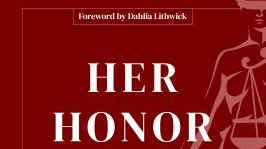Art installation inside Mansueto Library dome transforms OI’s ancient figures

Artist Ann Hamilton’s evocative images make ‘the ancient past tangible’
During a visit to the University of Chicago, visual artist Ann Hamilton became enamored with the Oriental Institute’s collection of stone and ceramic figures—ancient but timeless, inanimate but strangely alive. To celebrate the OI’s 100th anniversary, she has transformed those figures into a public installation inside one of the campus’ most iconic structures.
In the fall of 2018, Hamilton spent a week in residency working with the OI Museum’s curators, conservators and registrars to make images of ancient Egyptian and Mesopotamian artifacts using early-generation scanners. The images, enlarged to gigantic scale, are now affixed to the elliptical glass dome of the Joe and Rika Mansueto Library Grand Reading Room, creating Hamilton’s new installation titled aeon, which is on display through October. [Note: Recently extended to December 15.]
Printed on 160 sheets of semi-transparent film, each 2 x 2 meters, the 20 images Hamilton created are not intended to duplicate what might appear in a museum display case. She sought to reveal ineffable qualities of these objects through the use of scanners, in a unique hybrid of gestural drawing and lensless photography.
The unsettling liveliness of the images echoes a fundamental quality imparted to the figures by their makers millennia ago. The Egyptian Ushabti were placed in tombs in larger numbers, journeying with the entombed person to the world beyond, ready to spring to life as servants. The Mesopotamian figures were deemed so much alive that they were given food and drink, since the care given to these effigies had direct consequences for people in the underworld.
Mansueto Reading Room Dome
“Ann’s images have an equal partner in the magnificent Mansueto dome,” said Laura Steward, the UChicago Curator of Public Art, who invited Hamilton to make the project. The dome provides both awesome scale—some images are 12 meters tall—and dazzling illumination. After several thousand years entombed underground, and nearly a century enclosed in the OI’s display cases, these temple figures derive majesty and power from their location in the Mansueto.
“Across centuries, we stand in front of these figures, with a felt sense of recognition,” said Hamilton, who is known internationally for her large-scale multimedia installations, public projects and performance collaborations. “The liveness of the object draws us toward it, makes a connection, sparks curiosity.”
When conceptualizing aeon, Hamilton felt drawn to the “temple-like feel” of Mansueto Library—designed by architect Helmut Jahn and opened in 2011—as well as the chance to juxtapose ancient figures with one of UChicago’s most futuristic buildings. She sought to explore the nature of reading rooms as places of gathering—the paradox of being present in a space, but escaping from it.
“When you read, you are in two places—the reading room and the faraway world of the book,” said Hamilton. “That particular quality of simultaneous attentions is central to aeon.”
Hamilton worked with a small flatbed desktop scanner and a handheld wand scanner, both designed with a shallow depth of field and intended for documents, not three-dimensional objects.
The movement of the scan head, whether driven mechanically or by hand, differentiates scanners from traditional cameras. The resulting images record the movement of the scanner’s light across the figure over time. Strangely, this sense of movement accrues not to the photographic process, but to the figures themselves. That, and the shallow depth of field, make them seem to actively emerge from a misty background.
The OI
For the OI, which since its founding in 1919 has led groundbreaking research of ancient Middle Eastern civilizations, the exhibition invigorates and reinterprets the type of work and research often hidden from the public eye.
“Ann Hamilton’s installation makes the ancient past tangible,” said Jean M. Evans, the OI Museum’s Chief Curator and Deputy Director. “By taking these artifacts out of the Museum and transposing them onto such a prominent space—but one where you don’t expect to see them—the installation makes us think about why ancient civilizations, our beginnings, are still so important and relevant.”
The OI’s centennial provided an impetus for a major reinstallation of the objects on display. For this reason, many of the OI’s most extraordinary small objects were out of their cases and available to Hamilton for this project.
“Our centennial is a time to reflect on a century of accomplishments, but just as importantly it is an occasion to look to the future, set new, ambitious goals, and expand our scope,” said Christopher Woods, OI director and the John A. Wilson Professor of Sumerology. “Fostering greater engagement with the contemporary arts is critical to this vision and a major focus of our centennial celebrations. We are delighted that an artist of Ann Hamilton’s caliber has found inspiration in our collection and has partnered with us on this evocative installation.”
A professor of art at Ohio State University, Hamilton is known for site-specific installations that examine how knowledge is shaped by language and touch. Her recent projects include CHORUS—a text-based marble mural in New York City’s WTC Cortlandt Station—and O N E E V E R Y O N E, a series of portraits shot through translucent polyurethane sheets.
“What we feel in the images is the tactile point of contact,” Hamilton said. “We know things, or the felt quality of things, not because we have more information but sometimes because there is less.”
Just as historical perspective shifts in time, these translucent images change depending on the vantage point of the viewer. One angle might throw the figures against a concrete backdrop; take a few steps, and they may rest instead on trees or clouds.
For aeon, Krueck + Sexton Architects facilitated integration of art and architecture and served as technical advisor to Hamilton and UChicago. ER2 Image Group provided support to Hamilton’s vision in the production and installation of aeon.
On Sept. 17, UChicago will host a public event from 6 to 8 p.m. as part of EXPO Art Week to celebrate the installation of aeon, featuring remarks from Hamilton. The installation will be open to the general public on Saturdays from 9 to 11 a.m.
In addition, UChicago Library’s Special Collections Research Center Gallery will feature an exhibition exploring the OI’s century of excavation and scholarship. “Discovery, Collection, Memory: The Oriental Institute at 100” will be open to the public through Dec. 13. A free, curator-led tour of the Special Collections exhibition also will be available to the public during Humanities Day on Oct. 19.

Visitors without a UChicago ID can enter to see the installation and the exhibition by obtaining a visitor pass from the ID and Privileges Office in Regenstein Library.
“The importance of the Middle Eastern collection at the University of Chicago Library is recognized by scholars throughout the world,” said Brenda Johnson, director and University librarian. “The Library shares the OI’s commitment to rigorous explorations of the world’s history and is pleased to celebrate this important centennial by hosting Ann Hamilton’s aeon and the exhibition in the Special Collections Research Center.”
Since its founding in 1919, the OI has led a century of excavations and research projects throughout the Middle East, many of which continue today in countries including Egypt, Iraq, Turkey and Afghanistan. The comprehensive and rigorous work of OI scholars deciphers ancient languages; reconstructs histories, literatures and religions of long-lost civilizations; and creates transformative dictionaries that serve as cultural encyclopedias essential to understanding the ancient world.
As part of the centennial celebrations, the OI Museum’s galleries have been fully renovated and more than 500 new objects have been put on display. Special events as well as artist collaborations are planned throughout the 2019–2020 academic year, kicking off with a public celebration on Saturday, Sept. 28. A full listing is available at the centennial website.





